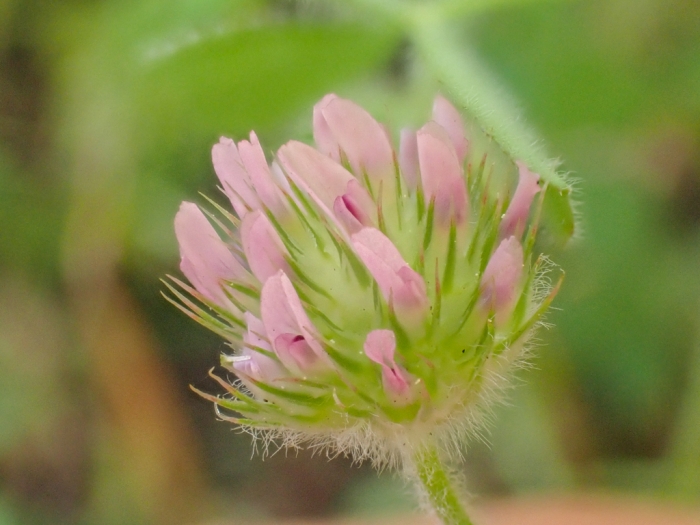Smallhead Clover
(Trifolium microcephalum)
Smallhead Clover (Trifolium microcephalum)
/
/

Chloe and Trevor Van Loon
CC BY 4.0
Image By:
Chloe and Trevor Van Loon
Recorded By:
Copyright:
CC BY 4.0
Copyright Notice:
Photo by: Chloe and Trevor Van Loon | License Type: CC BY 4.0 | License URL: http://creativecommons.org/licenses/by/4.0/ | Rights Holder: Chloe and Trevor Van Loon | Publisher: iNaturalist | Date Created: 2021-04-03T11:04:10-07:00 |
























Estimated Native Range
Summary
Trifolium microcephalum, commonly known as smallhead clover, is an annual herb native to a variety of habitats in western North America, ranging from southern Alaska and British Columbia to California, Montana, Arizona, and Baja California. It is typically found in open areas such as meadows, grasslands, and forest clearings, as well as disturbed sites, including roadsides where it can sometimes be weedy. Smallhead clover reaches a modest height of up to 20 inches (50 cm) and has a distinctive appearance with hairy leaves and oval leaflets. From late spring to early summer, it produces dense, spherical flower heads that are pinkish or purplish in color, which are attractive to pollinators but not particularly showy for ornamental purposes.
In cultivation, smallhead clover is valued for its nitrogen-fixing ability, which can improve soil fertility, making it a useful cover crop in agricultural settings or for soil improvement in gardens. It is also used in wildflower mixes for naturalized areas. This plant prefers full sun to partial shade and tolerates a range of soil types, provided they are well-drained. It is drought-tolerant once established and requires minimal maintenance. While not commonly afflicted by diseases, it can be susceptible to rust. Smallhead clover is not typically grown for its ornamental qualities but can be a beneficial addition to ecosystems and for soil health in cultivated landscapes.CC BY-SA 4.0
In cultivation, smallhead clover is valued for its nitrogen-fixing ability, which can improve soil fertility, making it a useful cover crop in agricultural settings or for soil improvement in gardens. It is also used in wildflower mixes for naturalized areas. This plant prefers full sun to partial shade and tolerates a range of soil types, provided they are well-drained. It is drought-tolerant once established and requires minimal maintenance. While not commonly afflicted by diseases, it can be susceptible to rust. Smallhead clover is not typically grown for its ornamental qualities but can be a beneficial addition to ecosystems and for soil health in cultivated landscapes.CC BY-SA 4.0
Plant Description
- Plant Type: Herb
- Height: 0.2-1 feet
- Width: 0.5-1 feet
- Growth Rate: Moderate
- Flower Color: White, Pink
- Flowering Season: Spring, Summer
- Leaf Retention:
Growth Requirements
- Sun: Full Sun
- Water: Medium
- Drainage: Medium, Fast
Common Uses
Bee Garden, Low Maintenance
Natural Habitat
Native to open areas such as meadows, grasslands, and forest clearings, as well as disturbed sites
Other Names
Common Names: Small-Head Field Clover, Littlehead Clover, Maiden Clover, Marden Clover
Scientific Names: , Trifolium microcephalum, Lojaconoa microcephala, Trifolium microcephalum f. velutinum, Trifolium microcephalum var. bipedale, Trifolium microcephalum var. glabrum, Trifolium microcephalum var. lemmonii, Trifolium microcephalum var. microcephalum, Trifolium multiflorum,
GBIF Accepted Name: